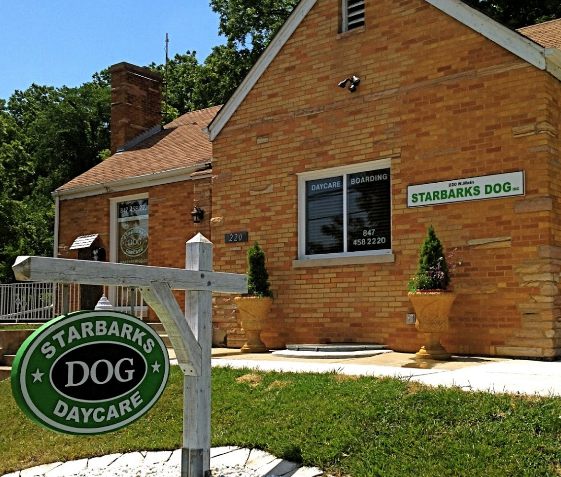I get so many clients that have done a search of the USPTO database and found dead trademark filings that they are interested in using as their own trademark. In this post we will talk about what a dead trademark is, how a trademark “dies”, and whether you should attempt to revive a dead trademark to use it as your own.
What is a dead trademark?
The United States Patent and Trademark Office (USPTO) contains a database of all trademarks in the trademark electronic search system. Trademarks and trademark applications can be listed as both “live” and “dead”. A “dead trademark” is a trademark that no longer is active or pending at the USPTO.
Think of it this way. When you draft a blog post for your website, it may be in various stages of activity. It could be “pending” which means you haven't yet published it yet. It could be published. Or you may decide to delete it at some point in the future because the content is no longer relevant.
The USPTO is a quasi-judicial body. Whenever anyone files a trademark application, there is a record of that. And the USPTO cannot delete those applications from the system, regardless of whether they register or not. Instead, if the trademark application (or registration) no longer is active, it becomes “dead”.
This can happen for a variety of reasons.
How can a trademark die?
There are a number of ways that a trademark file can die. In this section, we will address 5 of the most common reasons a trademark can die, including express abandonment, failure to respond, court order, generocide or failing to file a statement of use.
Express Abandonment
Express abandonment occurs where the trademark applicant files a notice of abandonment with the USPTO that they wish to abandon their trademark application. This can happen for a variety of reasons, but is most common when an applicant receives a cease and desist letter from a third party after they have filed their trademark application, or if their application has been opposed during the publication period.
In both of these situations, the applicant (often unrepresented by a trademark attorney and without legal advice) realizes during the application process that their trademark actually infringes on another registered trademark.
Failure to Respond (Abandoned trademark application)
Failing to respond to an office action is one of the most common ways that a trademark application will go dead. About 8-10 months after filing a trademark application, the USPTO will assign an attorney to examine the application and make sure it complies with trademark law. In addition, the examining attorney will run a search to make sure the mark on the application is not likely to be confused with any other registered trademarks.
If the examining attorney determines that the application is legally deficient, or otherwise is likely to cause confusion with a prior-filed pending application or another registered similar trademark, they can issue an office action.
Previously, applicants had up to 6 months to respond to an office action. However, the trademark office changed the rules recently and any office actions issued on or after December 3, 2022 must be responded to within 3 months.
The end result has been that many applicants, especially those filing DIY trademark applications, have failed to respond to the office actions and allowed their trademark applications to die.
Court Order
If a trademark application makes it through the entire application process and becomes a registered trademark, it still remains vulnerable to a cancellation proceeding for the first 5 years after it is registered.
If a third party trademark owner determines that another subsequent trademark registration violates it's trademark rights, they can file a cancellation proceeding in Federal Court. In addition, another trademark applicant or business owner may file a cancellation proceeding if they determine that another trademark registration is no longer being actively used in commerce.
Trademarks are only legally valid so long as they are being used in commerce. If the trademark owner goes out of business or otherwise stops using the trademark in connection with the goods or services listed on the registration, then their trademark may be cancelled by court order. As such, their trademark status will be changed to dead.
As a quick side note, trademarks may also be cancelled by the trademark trial and appeals board (TTAB). This is what happened in 2014 to six trademarks owned by the former Washington Redskins football team of the NFL.
Generocide
Generocide is the legal term for when a trademark becomes generic over time. A generic trademark does not have any legal rights. Several examples of trademarks that were cancelled for generocide include Aspirin, Escalator, Trampoline and Thermos.
If a trademark is cancelled for generocide, it will become dead.
Failure to File a Statement of Use
You can file a trademark application without actually using the trademark, This is called an intent to use application. If your application makes its way through the entire registration process, but you have never filed an “Amendment to Allege Use”, then you will receive a “Notice of Allowance”.
After receiving the Notice of Allowance, you have up to 36 months to start using the trademark in commerce. Once you do, you must file a “Statement of Use” with the USPTO showing evidence that you are using the trademark in commerce. Approximately 3 months after filing your statement of use, you will receive a trademark registration.
However, if 3 years pass and you never file a statement of use, or you fail to file an extension of time (these are required every 6 months after the Notice of Allowance is issued), then your application will be deemed abandoned and your trademark will become “dead”.
Can you revive a dead mark?
Determining whether you can revive a dead trademark is an interesting legal question, and really depends in large part on the reason the trademark was killed off in the first place.
If you are the original owner of a trademark that was registered, but then cancelled because you failed to file the appropriate renewal documents (required 5, 10 and 20 years after registration), then you might be able to revive your trademark. You can do this either by filing a petition to revive (typically due within 2 months or the original due date and requires additional fees and documents), or by filing a brand new trademark application for the same mark.
If you were not the original owner of the trademark, then you must be aware that just because a trademark is dead does not mean that the previous owner doesn't still retain common law rights to the trademark. However, if they didn't care enough to maintain their trademark, then they likely won't come after you for trademark infringement if you decide to file a new trademark application for the same mark!
The third scenario is where someone inadvertently thinks a trademark is available just because another trademark application and/or registration has been abandoned. One of the most common reasons for an abandoned application is because an office action was issued against that application for a likelihood of confusion with another live trademark. In this case, if you decide to attempt to file a new trademark application for the same mark, then it is likely that your application will meet the same fate!
In the next section, we will talk briefly about what you should do if you want to file a new application for a dead trademark.
How to Claim a Dead Trademark as Your Own
To claim a dead trademark as your own, you must follow the same process as anyone else who is seeking a federal trademark registration. Here are the 5 steps we follow with all of our trademark clients to help them secure the exclusive rights to their intellectual property.
Step #1 – Prepare a description of your goods or services
Before you can even conduct a proper trademark search, you must have a firm grasp of the goods or services you will be selling, as well as the classes that those goods or services fall under with the USPTO. You may use the Trademark ID Manual to look up your products and develop some possible descriptions.
Step #2 – Conduct a full and comprehensive trademark search
Once you have a proper description of the products or services you will be (or are) selling, as well as the classes that you will be selling in, it is important to conduct a full and comprehensive search.
But before you do the search, you should look up the dead trademark you are seeking to revive and determine why it was marked dead. If it was because the original applicant abandoned the application after receiving an office action, then you want to read through the office action to determine whether the issues on their application can be overcome in your application.
Assuming they can, then you should move forward to conduct your search in the USPTO database (as well as other common law sources).
Step #3 – Prepare and file a trademark application
After you have cleared the name you want to use, you should prepare and file your trademark application as quickly as possible. You will need to pay a filing fee when you file your application, which will vary depending on how many classes you are filing in. Typical fees are $350/class.
You will also need to
Step #4 – Respond to any office actions
As mentioned above, approximately 8-10 months after you file your application, it will be assigned to an examining attorney. They may issue an office action that you must respond to within 3 months.
Step #5 – Police your mark so it doesn't end up dead!
With any luck, after 12-18 months you will have your trademark registration! From there, make sure you police your trademark and don't forget to file your maintenance documents so that you don't end up with a dead trademark!



